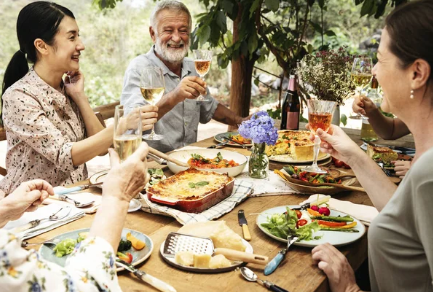Lasagna has long been a favorite in Swedish kitchens, a dish that gathers family and friends around the table. At its core, it's a simple meal, yet it has a way of feeling both luxurious and homey at the same time. With its layers of pasta, sauce, and cheese, it has earned a place in many homes, whether made in the classic way or adapted for different diets. Cooking for everyone should be a given, but as more people develop food allergies, intolerances, or make dietary changes, it becomes more of a challenge. How do you keep the essence of a truly great lasagna while ensuring that everyone can enjoy it?
In Italy, lasagna is an institution. It’s a dish passed down through generations, with each region boasting its own variation. In Sweden, lasagna has become just as natural as meatballs and potatoes, and there is a growing curiosity for new versions that reflect both Swedish ingredients and modern eating habits. Striking the balance between tradition and innovation is a challenge, but it’s also an opportunity to create something new without losing what makes it special.
There is something deeply satisfying about making lasagna from scratch. Simmering a rich tomato sauce until the flavors deepen, selecting the perfect cheese that melts at just the right pace between the pasta layers—it’s a process that requires both time and love. But when cooking a lasagna that suits everyone, a little extra thought is required. How do you make a gluten-free lasagna that still has that perfect balance of chewiness and creaminess? How do you create a vegan lasagna that feels just as comforting as a classic one?
Sweden has a long tradition of adapting food to the seasons and using local ingredients. Working with what is available here and now is a philosophy that, in many ways, mirrors the Italian approach to food. A truly great lasagna doesn’t have to follow an exact template but can be shaped by the best ingredients at the moment. A classic lasagna requires flavorful cheese, but instead of Parmigiano Reggiano, a well-aged Wrångebäck or Västerbotten cheese can bring the same deep umami notes. A gluten-free lasagna can be made with thin slices of celeriac or zucchini instead of pasta while still maintaining the essence of the dish. A vegan version can be elevated with a creamy béchamel sauce made from oat milk and a rich tomato sauce filled with slow-cooked vegetables and herbs.
There’s a playful challenge in making food that suits everyone. Any Italian chef might sigh deeply when a guest orders a gluten-free lasagna, only to see the same guest happily munching on a piece of regular bread on the side. Or when a strict vegan requests a lasagna without cheese but doesn’t hesitate to taste their friend’s plate. There’s a lighthearted irony in how we approach our food choices—and how we sometimes aren’t even consistent with our own decisions. But maybe that’s exactly what makes food so alive. It’s not just about what we eat but about the experience of sharing a meal, being flexible, and creating something that feels right in the moment.
Swedish cuisine has always had a strong connection to home-cooked comfort food, meals made from scratch meant to nourish properly. At the same time, Italian food culture has carved out a natural place here, both through immigration and Swedes’ love for pasta and cheese. Italian restaurants have been part of Sweden’s food scene since the early 20th century, and over time, these flavors have become an integral part of the Swedish culinary landscape. Today, we see how Italian food blends with Swedish ingredients in ways that feel both natural and inspiring.
Interestingly, lasagna in Sweden has taken on a role similar to Jansson’s Temptation. It’s a dish often served at larger gatherings, one that is easy to prepare and takes care of itself in the oven while guests arrive. It serves the same purpose—hearty, warming, and perfect for sharing. Maybe that’s exactly why lasagna has become such a seamless part of Swedish food culture. It can be adapted, changed, and still retain its soul.
Making a lasagna for everyone isn’t about compromising on flavor; it’s about understanding what makes the dish special in the first place. It’s the balance of textures, the slow-building flavors, and that satisfying feeling of cutting through layer after layer. It’s about using the best available ingredients, letting Swedish produce meet Italian food philosophy, and creating something that everyone can enjoy. Whether it’s a classic version, a vegetarian, or a vegan lasagna, it’s the genuine love for food that makes all the difference.
So next time you make lasagna—dare to experiment. Maybe you’ll find a new favorite variation. Maybe you’ll discover that a gluten-free lasagna can be just as fantastic as a classic one. Maybe you’ll notice that the extra time you spent choosing the right cheese, the right tomatoes, and the right spices truly made a difference. Food isn’t just about what we eat but about how we approach it. And in the end, it’s always about the most important thing—enjoying, sharing, and letting food bring us together.

